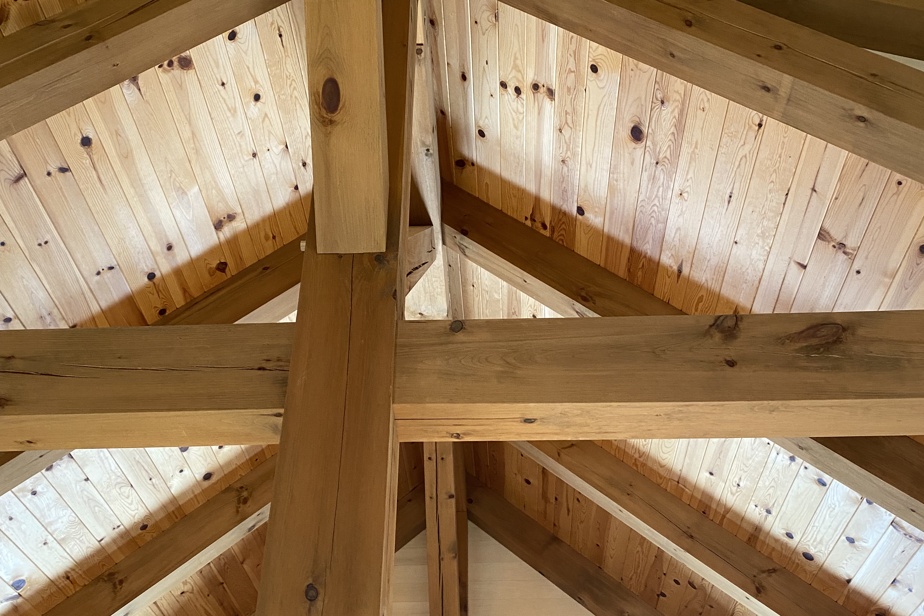Green walls, hemp wool, cellulose and wood coverings for interiors and exteriors are among the products that will be showcased at the first Bio-based construction fair in Bas-Saint-Laurent, which will be held on April 25, in Rivière-du-Loup.
To discover: about thirty products from Quebec or in development, which allow the construction of efficient and ecological buildings, with a very low environmental impact.
“Bio-based products are made from resources that are renewable, unlike what comes from the petrochemical industry, which emits a lot of greenhouse gases and whose resources do not renew themselves,” explains Mylène Joncas, deputy director of Créneau Écoconstruction, which organizes the show in collaboration with SEREX and Cecobois.
Wood remains the best-known biobased material. “But many other natural fibers can be used to produce super-innovative materials that perform as well, if not better, than what is made conventionally from the petrochemical industry,” she says. When we talk about the performance of a building, it is of course a question of energy management, but also of humidity management, air quality and comfort for the inhabitants. The absorption quality of natural insulation, such as hemp, wood fiber panels and cellulose, makes it possible to manage ambient comfort, because nature does it on its own. »
In the industrial era, the materials considered to perform are those that are manufactured in large quantities, which give an R-value, which is the thermal value in Quebec and Canada, notes René Couture, senior strategic advisor for the company of eco-marketing E=MK2.
“In North America, we think a lot about cold,” he says. With global warming, there are also opportunities to have materials that will cope better with heat. In summer, it takes the air conditioning inside, because it’s too hot. Biobased materials are carbon sensors, but they are also heat sensors, which will also better manage the cold. We follow what is being done in Europe. They are more advanced there, because they are probably more affected by global warming. We are now talking about buildings that are breathable, that is to say that breathe. »
The symposium in Rivière-du-Loup will help raise awareness of biobased materials, says Emmanuel Cosgrove, general manager of Écohabitation and senior LEED Canada assessor for homes. His carbon-neutral LEED Platinum country house in Wakefield was built almost entirely with bio-based materials.
“Professionals have to ask themselves all the time if they could have chosen more bio-based elements for each of their contracts,” he says. We must also think about the availability of biosourced materials in our hardware stores. We make the equation all the time between the energy efficiency of a building and the carbon. But if you have a building full of concrete, plastic, glass and metal, which consumes little electricity, these are the materials that will create the bulk of the carbon footprint, during the life cycle of the building. »
The establishment of a standard is necessary to limit the carbon of buildings built in Quebec, he believes. This is precisely what the Interdisciplinary Research Laboratory in Sustainable Engineering and Ecodesign (LIRIDE) is working on, directed by Ben Amor, Associate Professor in the Department of Civil Engineering and Building Engineering at the University of Sherbrooke. “It’s going to take another three years before we can launch it, but there’s a whole series of doctorates and master’s theses on it right now,” says Emmanuel Cosgrove.
The Circular Economy Research Network of Quebec, which also brings together several universities, also focuses a lot on construction materials. “One way to promote the circular economy is to minimize the inputs into our building materials so that materials at the end of a building’s life, for example, always find takers elsewhere,” says the ecologist. There are plenty of ideas in circulation, such as the famous BIM, Building Information Management, which would be a kind of virtual warehouse where the materials of a building at the end of its life or changing vocation would be put on the market. »
He firmly believes in it. “All of this will happen in the future,” he predicted. For the moment, it is thinkers like us who are trying to start all these projects. »















